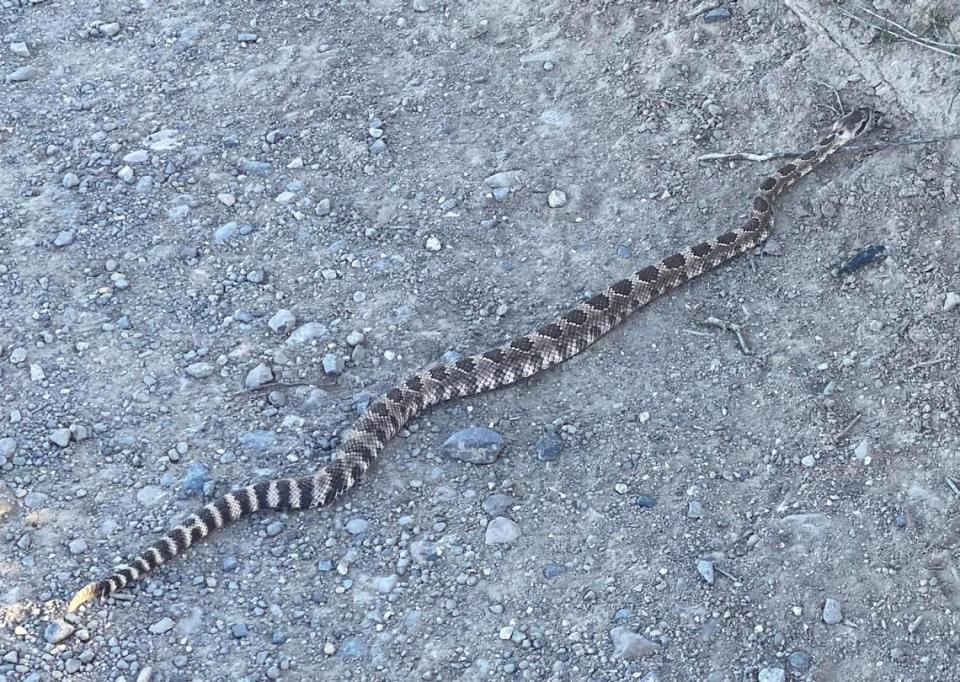Hiker saw this on Badger Mountain. Watch where you step with the start of snake season
With the start of spring Tuesday, at least one of Badger Mountain’s rattlesnakes slithered into the sunlight.
Jim Powell reported seeing the snake and took a photo of it on the trail near the top of the mountain that he shared with the Tri-City Herald.
Rattlesnakes on the highly popular Richland hiking trail in March are not unexpected. Two springs ago the Benton County Parks department took its first report of the season on Badger Mountain at the end of March.
But usually in the Columbia Basin rattlesnakes emerge from their dens in April, according to the Washington state Department of Fish and Wildlife.
The Benton County parks department usually hears about one to two sighting a year of rattlesnakes on Badger Mountain’s hiking trails.
Park visitors also may see rattlesnakes at other county park land, including Candy Mountain near West Richland, Hover Park in Finley and Horn Rapids Park on the Yakima River.
“Our parks also function as nature reserves,” Benton County’s parks department posted on Facebook previously. “Please do not harass or harm rattlesnakes or any other wildlife in the parks.”
Dogs must be on leash at all times, it said.
Rattlesnakes are the only snake found in Washington capable of inflicting a venous bite, which it seldom does, according to the Washington state Department of Fish and Wildlife.
More common on Badger and Candy mountains are bull snakes, which have some resemblance to rattlesnakes, said Jim Langdon, trailmaster for Friends of Badger Mountain.

Rattlesnakes are generally not aggressive, but they will strike when they are threatened or deliberately provoked, according to the U.S. Department of Agriculture.
Still, about 8,000 people are bitten by venomous snakes in the United States each year, with 10 to 15 deaths resulting.
To avoid rattlesnake bites, do not approach any snake you cannot positively identify as a safe species, says the USDA.
If you hear a warning rattle, move away and don’t make any sudden movements in the snake’s direction. However, rattlesnakes do not always rattle before they strike, according to the USDA.
Rattlesnakes can only strike about half their length and a 3-foot snake is long for the Tri-Cities area, Langdon said. Keeping a few feet away should keep you safe, he said.
“You are not food to a rattlesnake so they really don’t want to strike you,” he said. “They just don’t want do be stepped on.”
If you get bitten, don’t try to suck the poison out with your mouth, apply a tourniquet, make a cut by the wound or ice the wound.
Instead, call 911 or go to a hospital or clinic as soon as possible, says the USDA.
Until the bite is treated, immobilize the affected area and keep it below the heart, if possible. Remove any jewelry, such as a watch or ring, that could constrict swelling.
Dogs bitten by rattlesnakes also need emergency veterinary care. There have been reports of dogs being bitten by rattlesnakes on Tri-Cities hillsides.

